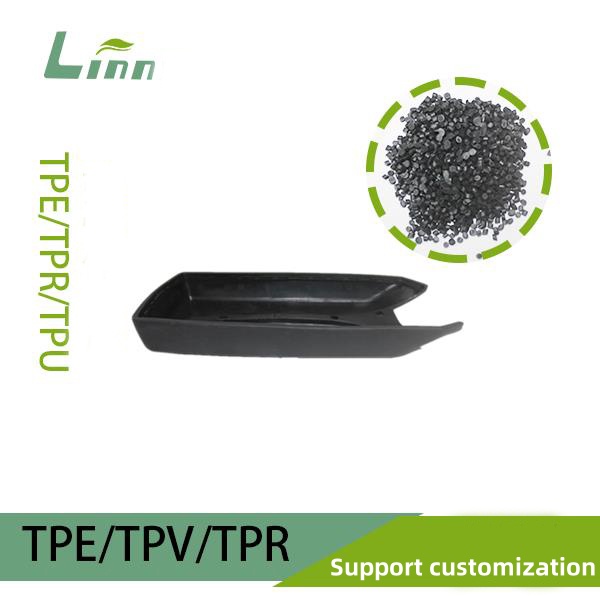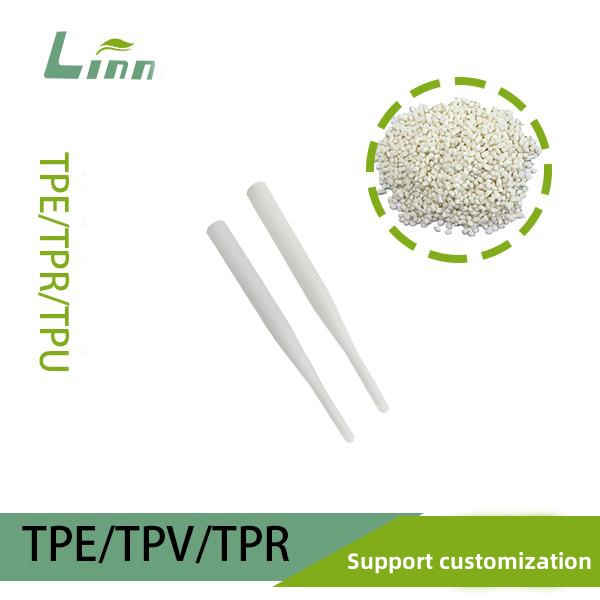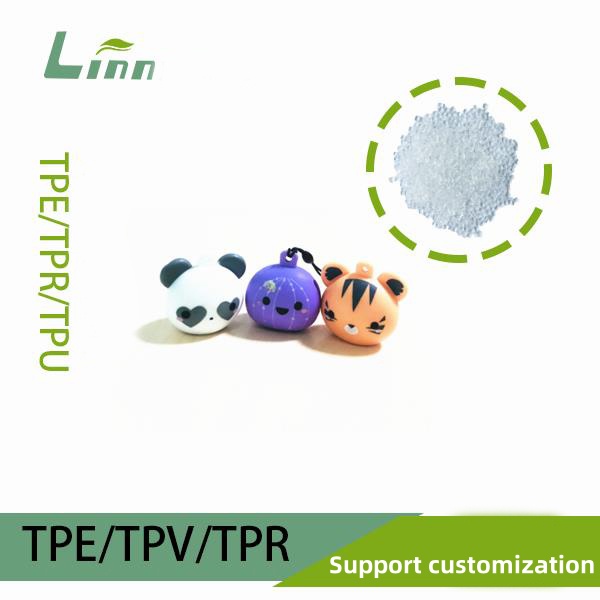I’ve spent over a decade in the plastics and rubber industry, working with materials like TPR (Thermoplastic Rubber) in everything from toy manufacturing to medical device production. One issue that pops up time and again is TPR parts or pellets sticking together, causing headaches for factory workers, warehouse managers, and quality control teams. If you’ve ever opened a storage bin to find TPR pellets clumped into an unmanageable mess or seen finished TPR products fused together, you know how frustrating it can be. In this article, I’ll walk you through why this happens, how to fix it, and, most importantly, how to prevent it from happening again. My goal is to share practical, hands-on solutions based on my experience so you can get back to smooth operations.

Why Do TPR Plastics Stick Together?
Before diving into solutions, let’s unpack why TPR, a versatile material known for its elasticity and softness, has this sticky tendency. From my years on factory floors, I’ve seen this issue stem from a few key causes:
Material Composition: TPR, often based on SBS (Styrene-Butadiene-Styrene) or SEBS (Styrene-Ethylene-Butylene-Styrene), contains oils and additives to enhance flexibility. These can migrate to the surface, creating a tacky layer that causes sticking.
High Temperatures: TPR softens and becomes stickier in warm environments, like during summer storage or in poorly ventilated warehouses.
Pressure and Contact: When TPR parts or pellets are tightly packed, prolonged contact under pressure encourages adhesion, especially if the surface is tacky.
Improper Storage: Storing TPR in humid or dusty conditions can attract contaminants that worsen stickiness.
Processing Issues: Overheating during extrusion or molding can degrade TPR, increasing surface tackiness in finished products.
I remember a client who stored TPR shoe soles in a hot warehouse without proper ventilation. By the time they were ready to ship, the soles had fused into a giant block, costing them thousands in rework. Understanding these causes is the first step to tackling the problem effectively.
Immediate Fixes for TPR Sticking Together
If you’re dealing with TPR pellets or parts that are already stuck, don’t worry—there are practical ways to separate them without ruining the material. Here are my go-to methods:
1. Manual Separation with Cooling
For small batches of stuck TPR parts or pellets:
Cool the Material: Place the clumped TPR in a refrigerated environment (around 5-10°C) for 1-2 hours. Cooling reduces tackiness, making it easier to separate pieces.
Gently Pry Apart: Use gloved hands or plastic tools to carefully pull apart the pieces. Avoid sharp metal tools, as they can damage the material.
Dust with Talc: Lightly dust the separated parts with talc powder or cornstarch to prevent re-sticking. Use sparingly to avoid affecting material properties.
I’ve used this method in a pinch when a batch of TPR pellets clumped during transit. Cooling them overnight made separation a breeze.

2. Vibration and Sieving for Pellets
For stuck TPR pellets in bulk:
Use a Vibrating Sieve: Pass the clumped pellets through a vibrating sieve with a mesh size slightly larger than the pellet diameter. The vibration breaks apart clumps without damaging the material.
Add Anti-Stick Agents: Mix in a small amount of calcium carbonate or silica powder (0.5-1% by weight) during sieving to reduce tackiness.
Check Equipment: Ensure the sieve is clean and free of contaminants that could affect pellet quality.
This approach saved a toy manufacturer I worked with when their TPR pellets arrived fused after a long shipment.
3. Surface Treatment for Finished Parts
For TPR products like grips or soles that are sticking:
Apply a Surface Coating: Use a thin layer of silicone-based or fluoropolymer-based anti-stick coating. These are safe for TPR and reduce surface tackiness without compromising flexibility.
Clean the Surface: Wipe parts with isopropyl alcohol to remove surface oils before coating. Test on a small sample first to ensure compatibility.
Test Performance: After treatment, check the parts’ elasticity and appearance to confirm the coating hasn’t altered their functionality.
4. Reprocessing for Severe Cases
If the sticking is too severe to separate manually:
Regranulate: Send the clumped material to a recycling facility to be reprocessed into new pellets. This is costlier but viable for large volumes.
Adjust Additives: Work with the reprocessing facility to add anti-tack agents like stearates during granulation to prevent future sticking.
Quality Check: Test the reprocessed material to ensure it meets your product specifications.
Caution: Always test separation methods on a small batch first to avoid damaging the material or affecting its performance in downstream applications.

Long-Term Solutions to Prevent TPR Sticking
Fixing stuck TPR is only half the battle. To keep this issue from recurring, you need to address the root causes. Here are strategies I’ve implemented successfully in factories and warehouses:
1. Optimize Storage Conditions
Proper storage is critical for TPR:
Control Temperature: Store TPR pellets and parts in a cool, dry environment (15-25°C). Avoid stacking materials in hot or unventilated areas.
Reduce Humidity: Use dehumidifiers in storage areas, as humidity can exacerbate stickiness by attracting dust and contaminants.
Use Proper Packaging: Store TPR in breathable, anti-static bags or containers with liners to minimize pressure and contact. Avoid overpacking.
I once advised a client to install industrial fans in their warehouse. This simple fix dropped the temperature by 5°C, drastically reducing TPR pellet clumping.
2. Adjust Material Formulation
Work with your supplier to tweak the TPR formulation:
Reduce Oil Content: Ask for a formulation with lower plasticizer or oil content to decrease surface tackiness. This may slightly increase hardness, so test for your application.
Add Anti-Tack Agents: Incorporate additives like calcium stearate or silica during compounding to reduce stickiness without affecting elasticity.
Specify Base Material: SEBS-based TPR is generally less tacky than SBS-based TPR. If stickiness is a recurring issue, consider switching to SEBS.
In one project, switching to an SEBS-based TPR for a client’s toy production cut sticking incidents by 80%.
3. Improve Processing Techniques
Sticking can also stem from improper processing:
Lower Processing Temperatures: Reduce extrusion or molding temperatures to the minimum recommended range (typically 160-200°C for TPR) to prevent oil migration to the surface.
Optimize Cooling: Ensure rapid, uniform cooling after molding to lock in the material’s structure and reduce tackiness.
Clean Equipment: Regularly clean extruders and molds to remove residual oils or degraded material that can increase stickiness.
A factory I consulted for reduced sticking in TPR grips by lowering their injection molding temperature by 10°C and adding a post-molding cooling bath.

4. Implement Quality Control Checks
Catch sticking issues early with robust QC:
Pre-Production Testing: Test each batch of TPR pellets for tackiness by compressing a small sample under heat and checking for adhesion.
Supplier Audits: Request Material Safety Data Sheets (MSDS) and Certificates of Analysis (COA) from suppliers to verify formulation consistency.
Regular Inspections: Check stored materials weekly for signs of clumping or tackiness, especially during warm seasons.
Here’s a quick reference table summarizing these preventive measures:
|
Strategy |
Action |
Expected Outcome |
|---|---|---|
|
Storage Conditions |
Store at 15-25°C, low humidity, use anti-static bags |
Reduces heat- and pressure-induced sticking |
|
Material Formulation |
Lower oil content, add anti-tack agents, consider SEBS-based TPR |
Decreases surface tackiness |
|
Processing Techniques |
Lower temperatures, optimize cooling, clean equipment |
Minimizes oil migration and degradation |
|
Quality Control |
Test batches, audit suppliers, inspect storage regularly |
Catches issues before they impact production |
Real-Life Case Study
To bring this to life, let me share a story from my consulting work. A client manufacturing TPR yoga mats faced a sticking issue during summer. The mats, stacked in a warehouse without air conditioning, fused together, making them unsellable. The client was facing a significant financial hit.
We took a multi-pronged approach:
Immediate Fix: Cooled the mats in a refrigerated room for 24 hours, then dusted them with talc to separate them. About 70% were salvaged.
Storage Upgrade: Installed dehumidifiers and fans in the warehouse to keep temperatures below 25°C.
Formulation Adjustment: Worked with the supplier to reduce the oil content in the TPR and add 0.5% calcium stearate, which cut tackiness significantly.
Process Tweak: Adjusted the extrusion cooling time to ensure a less tacky surface.
The result? The client salvaged most of their inventory, improved their production process, and avoided similar issues the following summer. They even reported a 10% boost in customer satisfaction due to better mat quality.

Broader Considerations for TPR Handling
Beyond immediate fixes and prevention, here are some additional tips to keep your TPR operations smooth:
1. Train Your Team
Many sticking issues arise from improper handling. I recommend:
Annual Training: Teach staff about TPR’s properties and storage needs. Use hands-on demos to show how temperature affects tackiness.
Visual Guides: Create posters or manuals with photos of proper vs. improper storage for quick reference.
2. Collaborate with Suppliers
Build a strong relationship with your TPR supplier:
Regular Communication: Share feedback about sticking issues and ask for customized formulations.
Site Visits: If possible, visit the supplier’s facility to understand their compounding process and quality controls.
3. Stay Updated on Industry Trends
TPR formulations are constantly evolving. Attend events like the Chinaplas Exhibition to learn about new anti-tack additives or processing technologies. I’ve picked up game-changing tips from industry peers at such events.
4. Consider Alternative Materials
If sticking remains a persistent issue, explore alternatives like TPE (Thermoplastic Elastomer) with lower tackiness or TPU (Thermoplastic Polyurethane) for specific applications. These may cost more but can save headaches in the long run.

Frequently Asked Questions
To wrap up, here are some common questions I’ve heard from colleagues and clients, along with my answers:
Q1: Can I use water to separate stuck TPR parts?
A: Water isn’t ideal, as it can introduce moisture that worsens sticking or affects material properties. Cooling and dusting with talc or silica are safer options.
Q2: How do I know if my TPR formulation is prone to sticking?
A: Check the MSDS for oil or plasticizer content—higher levels increase tackiness. You can also compress a sample at 30°C for 24 hours to test adhesion.
Q3: Are there coatings that permanently prevent TPR sticking?
A: Silicone or fluoropolymer coatings can reduce tackiness long-term, but they’re not permanent and may need reapplication. Test compatibility with your product first.
Q4: Can stuck TPR pellets still be used in production?
A: Yes, if separated properly and tested for quality. Regranulation is an option for severe cases, but ensure the reprocessed material meets your specs.
Q5: How do I convince my supplier to adjust the TPR formulation?
A: Share data from your sticking issues (e.g., photos, test results) and propose specific changes, like adding anti-tack agents. A quality agreement with clear specs can also help.
Closing Thoughts
Dealing with TPR plastics sticking together can feel like a never-ending battle, but with the right techniques, you can turn it into a manageable issue. From cooling and dusting to optimizing storage and formulations, the solutions I’ve shared come from years of trial and error in real-world settings. My hope is that this guide empowers you to tackle TPR sticking with confidence, saving you time, money, and stress. If you’re still struggling or have a unique case, drop a comment—I’d love to brainstorm solutions with you and keep your production running smoothly!



